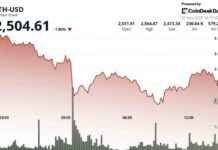Minister of Justice Bojan Božović has approved the extradition of Terraform Labs founder Do Kwon to the United States, a decision that has stirred controversy and legal battles between governments. After a tumultuous series of events, Kwon now faces the possibility of prosecution in the U.S. for his role in the Terra-Luna fiasco that caused a $60 billion industry-wide collapse.
The Great Terra-Luna Fiasco
In 2022, Do Kwon’s Terra blockchain experienced a catastrophic meltdown, leading to the downfall of numerous over-leveraged crypto businesses such as Three Arrows Capital, BlockFi, and FTX. As panic spread in the crypto market, Kwon fled, evading capture until Interpol issued a Red Notice warrant for his arrest.
The International Chase
After hiding in Serbia and crossing into Montenegro, Kwon attempted to escape to Dubai using forged passports. However, his plans were thwarted when Montenegro police arrested him and Han Chang-joon, Terraform Labs’ former finance officer, at Podgorica airport. Both individuals spent four months in jail as U.S. and South Korean authorities vied for their extradition rights.
Legal Battles and Settlements
The extradition decision faced numerous challenges in Montenegro’s courts, with Do Kwon’s lawyer, Goran Rodić, contesting orders and appeals along the way. Ultimately, the Montenegro Constitutional Court dismissed Kwon’s final plea, paving the way for his transfer to the U.S. to face prosecution.
Despite Terraform Labs agreeing to cease operations and pay a record-breaking $4.47 billion settlement to the Securities and Exchange Commission, Kwon’s legal woes are far from over. The looming question remains whether his lawyer will challenge the extradition order to the U.S., where he could potentially face a lengthy sentence for his alleged role in Terra’s collapse.
As South Korean authorities also pursue a case against Kwon for violating local market regulations, the future looks uncertain for the once high-flying entrepreneur. With both the U.S. and South Korea seeking justice, Kwon’s extradition marks a pivotal moment in the aftermath of the Terra-Luna disaster.
This complex legal saga underscores the global reach of financial crimes in the digital age and serves as a cautionary tale for those operating in the volatile world of cryptocurrency. The repercussions of Kwon’s actions reverberate far beyond the borders of Montenegro, highlighting the interconnected nature of modern financial markets and the challenges of holding individuals accountable in an increasingly complex regulatory environment.














